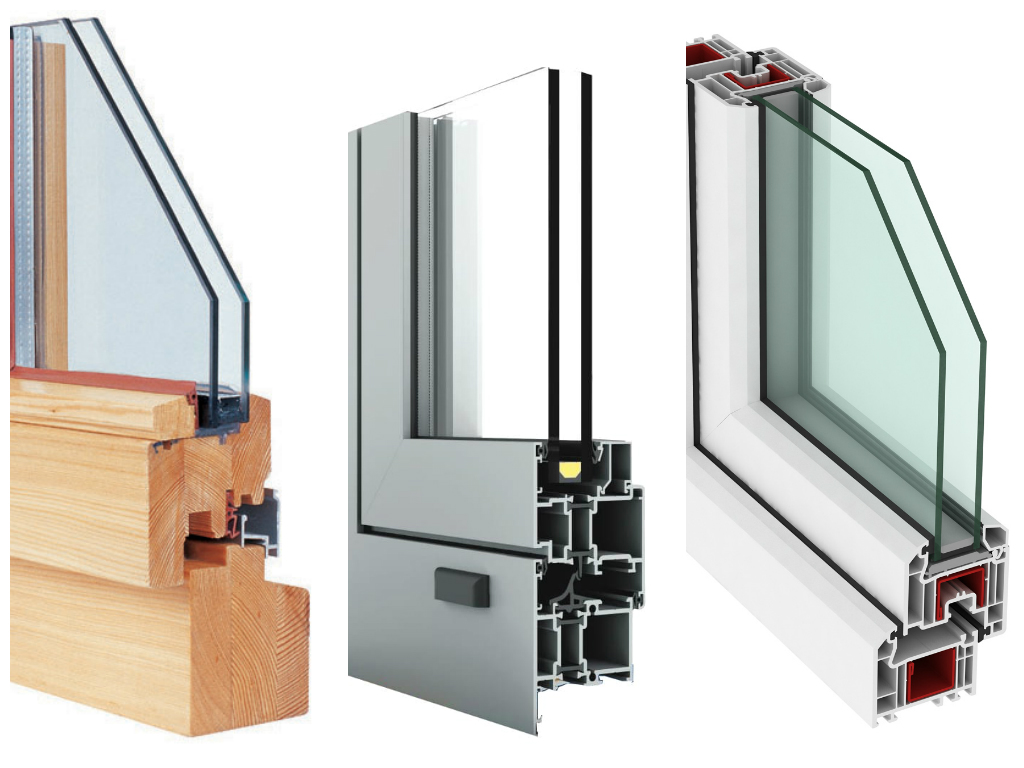When choosing window materials, it’s essential to select the right option for both style and function. Since each material – timber, aluminium, and uPVC – has unique benefits and drawbacks, understanding these differences will help you make the best choice for your home.
Overview of Window Materials
Windows play a crucial role, not only adding to the home’s aesthetics but also providing a barrier against external elements. Therefore, evaluating each material’s strengths and limitations can guide you toward the ideal solution.
Timber Windows: A Classic, Customisable Option
Timber windows bring a warm, natural look to any home, which makes them popular in both traditional and modern settings. Furthermore, timber offers design flexibility, as it can be shaped, painted, and varnished to fit a variety of aesthetics.
Benefits of Timber Windows:
- Customisation Options: Timber windows provide significant flexibility. Thus, you can achieve the precise look you want by painting, varnishing, or staining them. This feature is ideal for homeowners who prioritise aesthetics.
- Sustainable Choice: Since timber is a renewable material, choosing timber windows helps reduce your carbon footprint, promoting a sustainable home.
Drawbacks of Timber Windows:
- Higher Maintenance Needs: Although timber adds charm, it requires regular upkeep to prevent rot and weathering. Additionally, ongoing maintenance can increase long-term costs.
- Potentially Shorter Lifespan: Because timber can deteriorate under harsh conditions, it may not last as long as other materials.
Thus, timber windows are suitable for homeowners who value customisation and a natural look, provided they’re willing to maintain them over time.
Aluminium Windows: Strong, Sleek, and Low-Maintenance
Aluminium windows are widely known for their strength and modern appeal, making them ideal for contemporary architecture. Moreover, aluminium frames are often chosen for larger windows, as they provide a sleek profile capable of supporting significant glass panels.
Advantages of Aluminium Windows:
- High Structural Strength: Aluminium is stronger than both uPVC and timber. Consequently, it’s an excellent choice for expansive windows and commercial settings.
- Low Maintenance: Unlike timber, aluminium is naturally resistant to corrosion. As a result, it requires minimal upkeep, which is beneficial for those seeking a low-maintenance option.
Disadvantages of Aluminium Windows:
- Lower Energy Efficiency: Although standard aluminium windows are affordable, they aren’t as energy-efficient. For improved insulation, thermally broken aluminium frames are recommended, though these come at a higher cost.
- Susceptibility to Oxidation: Aluminium can oxidise over time, especially in coastal areas. Consequently, this may lead to a white residue on the surface.
Ultimately, aluminium windows are a reliable choice for homeowners valuing strength and a sleek, modern design. However, thermally broken options are better for those prioritising energy efficiency.
uPVC Windows: Energy-Efficient and Low-Maintenance
uPVC (unplasticised polyvinyl chloride) has become a popular choice due to its high energy efficiency, durability, and low-maintenance qualities. Moreover, uPVC is versatile enough to be used in various climates, from hot deserts to cold regions, thanks to its strong insulating properties.
Pros of uPVC Windows:
- Superior Insulation: uPVC provides excellent insulation, outperforming aluminium and even some timber options. Therefore, it can help reduce heating and cooling costs.
- Extremely Low Maintenance: Unlike timber, uPVC requires minimal upkeep. With only occasional cleaning, it remains in top condition for years.
- Affordable Investment: Since uPVC windows are generally more budget-friendly than high-performance timber or aluminium options, they’re a practical choice for energy-conscious homeowners.
Cons of uPVC Windows:
- Limited Customisation: Although uPVC is available in various styles, it doesn’t offer the same customisation options as timber, especially for unique shapes or colours.
Consequently, uPVC windows are an excellent choice for modern homes focused on insulation and cost-effectiveness due to their energy efficiency, low maintenance, and affordability.
Comparison Table: Timber vs Aluminium vs uPVC Windows
| Feature | Timber | Aluminium | uPVC |
|---|---|---|---|
| Energy Efficiency | Moderate | Low (High with thermal break) | High |
| Maintenance | High | Low | Very Low |
| Durability | Moderate | High | High |
| Cost | Variable | Variable (higher with thermal break) | Affordable |
| Environmental Impact | Sustainable | Recyclable | Energy-saving, recyclable |
| Aesthetic Options | Highly customisable | Sleek, modern | Limited customisation |
Final Thoughts: Which Material is Best for Your Windows?
Ultimately, the choice between timber, aluminium, and uPVC windows will depend on your home’s style, budget, and maintenance preferences. Timber windows are perfect for those who love a classic, natural look and don’t mind the added upkeep involved. Aluminium windows provide strength and a modern appearance, though thermally broken frames may be needed for improved energy efficiency. Finally, uPVC windows are an excellent choice for homeowners seeking energy efficiency, low maintenance, and affordability.
If you would like further guidance on choosing the best window material for your home, reach out to discuss how timber, aluminium, or uPVC windows could be the right fit for your needs.

